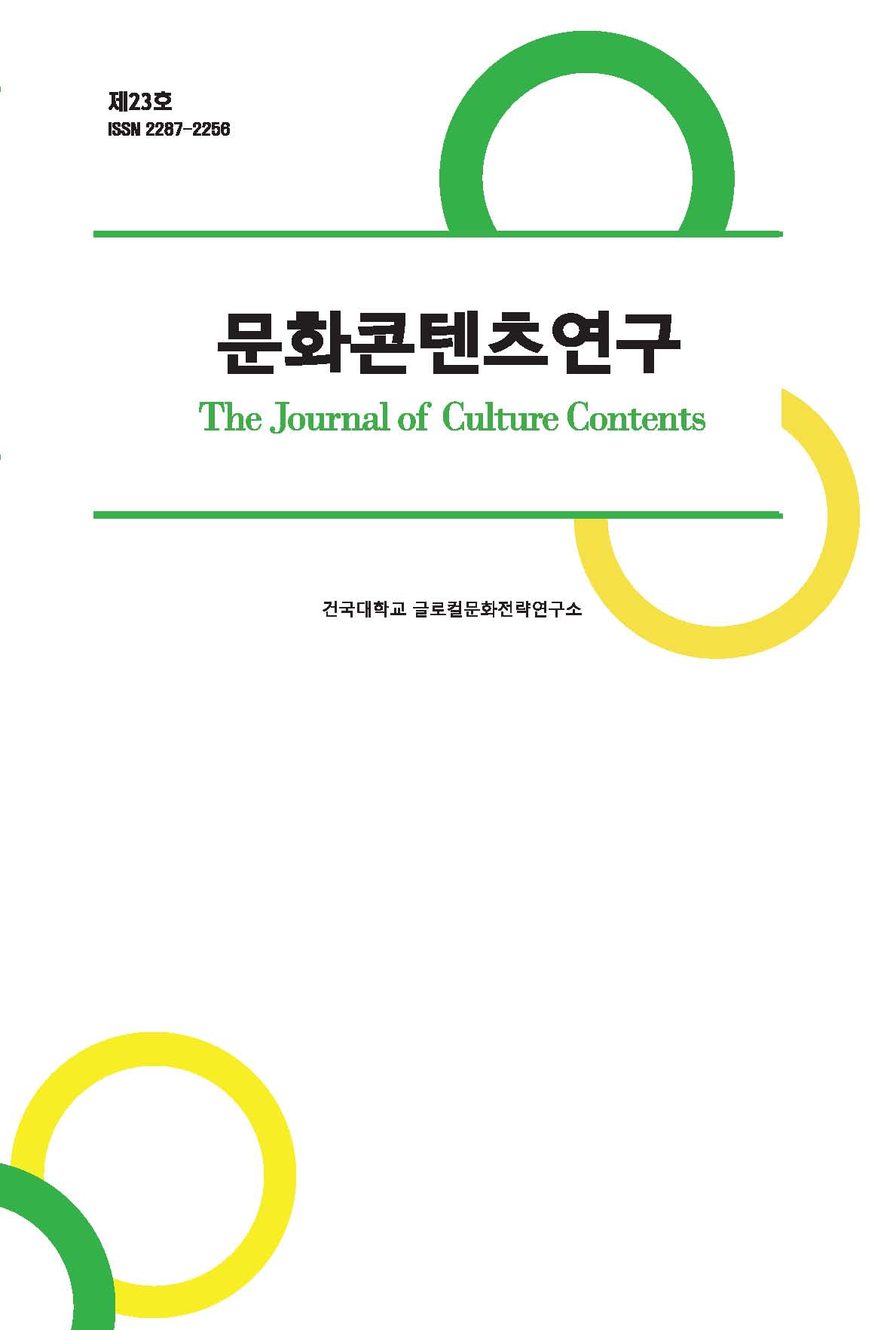Abstract
References
Information
Toys are a central tool for socialization and identity development of children. Studies on toys are numerous in the fields of education, psychology, anthropology, and gender studies. There is less literature on the sociological dimension of modern toys, especially in South Korean society. This article studies the very popular children’s construction sets line ‘Kids Block’ developed by South Korean Oxford company after the Danish Lego block model. A total of 390 sets belonging to 76 series presented on Oxford website by texts, images and videos are semiotically analyzed in this paper. Gender-typing representations are reinforced through these toys which are incredibly gendered, portraying a very subaltern female image and social role while boys are encouraged to nurture their masculine heroism through conflict related figurines. The focus made on war and risks themes by the brand (more than 50% of the available sets) are to be interpreted in the specific context of Korea. Further analysis also shows that the Oxford block sets are also rewriting a conservative national agenda around nationalist narratives, a very limited reinvention of tradition and a focus on neoliberal consumerism as promoted by South Korean cultural products.
장난감은 아이들의 사회화와 정체성 발전을위한 핵심 도구이다. 장난감에 대한 연구는 교육, 심리학, 인류학 및 젠더 연구 분야에서 많이 진행되었지만, 현대 장난감의 사회학적 역할에 대한, 특히 한국사회와 관련한 논문은 적다. 이 논문은 덴마크의 레고 블록 장난감을 따라서 한국 옥스포드 기업이 개발한 어린이용 ‘키즈블록’이라는 인기있는 블록 장난감 상품을 연구한다. 이 논문은 옥스포드 기업 웹사이트에서 텍스트, 이미지 및 동영상으로 소개된76 시리즈에 속하는 총390 세트를 기호학적으로 분석한다. 이 장난감에 담긴 서사는 엄격한 성유형화된 고정관념을 강화하여여성의 이등시민 이미지와 가부장적 사회적 역할을 제시하는 반면, 소년은 투쟁 관련 피규어를 통해 남성적 영웅주의를 추진하도록권장된다. 브랜드가 전쟁과 위험 테마에 초점을 맞춘것(판매중인 세트의50% 이상)은 한국의 특정한 사회역사적 맥락에서 해석되어야 한다. 게다가 옥스포드 블록 세트들은 민족주의적 네러티브, 제한된 전통의 재발명 및 한국 문화상품이 촉진하는 신자유주의적 소비주의에 초점을 맞춘 보수적인국가 아젠다를 구성시킨다.
- 강수정·이제성·이준영, 「키덜트 소비자의 장난감 소비동기와 소비행태 (Motivation and Behavior of Kidult Consumers’ Toy Consumption)」, 『소비문화연구』, 23(1), 2020.
- 이서율·김은정, 「완구 패키지디자인의 색채분석을 통한 아동 성역할 정체감 제고 및 개선 방향 연구 (A Study on the Improvement of Children’s Gender Role Identity through Color Analysis of Toy Package Design)」, 『일러스트레이션 포럼』, 72호, 2022. 10.37379/JKSIR.2022.72.02
- 송하나·최경숙, 「장난감의 성유형적 특성과 유아의 성이 놀이 행동과 정서 표현에 미치는 영향 (The influence of gender-typed toys and children’s gender on children’s play behaviors and emotion expression)」,『유아교육연구』, 제30권(제3호), 2010. 10.18023/kjece.2010.30.3.015
- Ahn, Yonson, “The Contested Heritage of Koguryo/Gaogouli and China-Korea Conflict.”, The Asia-Pacific Journal: Japan Focus, 제6권(제1호), 2008.
- Barthes, Roland, Mythologies, Points Seuil, 2014.
- Bartneck, Christoph, Qi Min Ser, Elena Moltchanova, James Smithies, and Erin Harrington, “Have LEGO products become more violent?”, Plos One, 제11권(제5호), 2016. 10.1371/journal.pone.0155401 27203424 PMC4874545
- Brandl, Michael, “Children’s Play and Military Toys Today.”, Psychological Science and Education, 제16권(제2호), 2011.
- Cicchelli, Vincenzo, and Sylvie Octobre, The Sociology of Hallyu Pop Culture: Surfing the Korean Wave. Palgrave Macmillan, 2021. 10.1007/978-3-030-84296-3
- Chang, Kyung-Sup, The Logic of Compressed Modernity, Polity, 2022.
- Cross, Gary S., Kids’ Stuff: Toys and the Changing World of American Childhood, Harvard University Press, 2001 (1999). 10.2307/j.ctv20w2v78
- Davis, Jac T. M., & Hines, Melissa, « How Large Are Gender Differences in Toy Preferences? A Systematic Review and Meta-Analysis of Toy Preference Research”, Archives of Sexual Behavior, 제49권(제2호), 2020. 10.1007/s10508-019-01624-7 31989412 PMC7031194
- De Waal, Frans, Différents - Le Genre vu Par Un Primatologue, Les liens qui libèrent, 2022, p.480.
- Dinella, Lisa M., Weisgram, Erica S., “Gender-Typing of Children’s Toys: Causes, Consequences, and Correlates”, Sex Roles, 제79호, 2018. 10.1007/s11199-018-0943-3
- Grzelczyk, Virginie, “The Politics of Toys: What Potential for Inter-Korean Reconciliation?”, Asian Studies Review, 46:4, 2022. 10.1080/10357823.2021.2016612
- Han, Sang-jin, ed., Beyond Risk Society: Ulrich Beck and the Korean Debate, Seoul National University Press, 2017.
- Hébert, Louis, An Introduction to Applied Semiotics: Tools for Text and Image Analysis, Routedge, Taylor and Francis Group, 2020. 10.4324/9780429329807
- Joinau, Benjamin. “Sleeping with the (Northern) Enemy : South Korean Cinema and the Autistic Interface.”, Valérie Gelézeau, Koen De Ceuster, and Alain Delissen, De-Bordering Korea: Tangible and Intangible Legacies of the Sunshine Policy, Routledge, 2013.
- Kim, Andrew Eungi (ed.), Korean society : An introduction, Korea University Press, 2017.
- Kim, Keong-il, Choi, Hyaeweol, & Sin, Kyung-ah (eds.). Korean women : A sourcebook. The Academy of Korean Studies Press, 2017.
- Klintman, Michael, “Toy Consumption as Political: Challenges for Making Dreams Come True.”, Magnus Boström, Michele Micheletti, and Peter Oosterveer (eds.), The Oxford Handbook of Political Consumerism, Oxford University Press, 2018. 10.1093/oxfordhb/9780190629038.013.13
- Machin, David, Van Leeuwen. Theo, “Toys as Discourse: Children’s War Toys and the War on Terror.”, Critical Discourse Studies, 제6권(제1호) (February), 2009. 10.1080/17405900802560082
- Reich, S. M., Black, R. W. & Foliaki, T., “Constructing Difference: Lego® Set Narratives Promote Stereotypic Gender Roles and Play”, Sex Roles, 제79호, 2018. 10.1007/s11199-017-0868-2
- Rommes, Els, Maartje Bos, and Josine Oude Geerdink. “Designing Gendered Toys”, International Journal of Gender, Science and Technology, 제3권(제1호), 2011.
- Suh, Jae-Jung, and Mikyoung Kim, eds., Challenges of Modernization and Governance in South Korea, Springer Singapore, 2017. 10.1007/978-981-10-4023-8
- Weisgram, Erica S., and Lisa M. Dinella, eds., Gender Typing of Children’s Toys: How Early Play Experiences Impact Development, American Psychological Association, 2018. 10.1037/0000077-000
- Publisher :Research Institute of Creative Contents
- Publisher(Ko) :글로컬문화전략연구소
- Journal Title :The Journal of Culture Contents
- Journal Title(Ko) :문화콘텐츠연구
- Volume : 26
- No :0
- Pages :27~69
- DOI :https://doi.org/10.34227/tjocc.2022..26.27



 The Journal of Culture Contents
The Journal of Culture Contents





